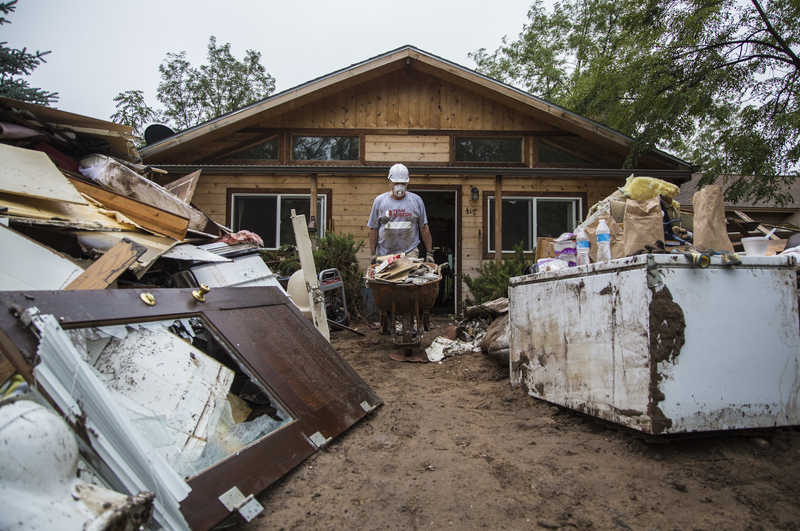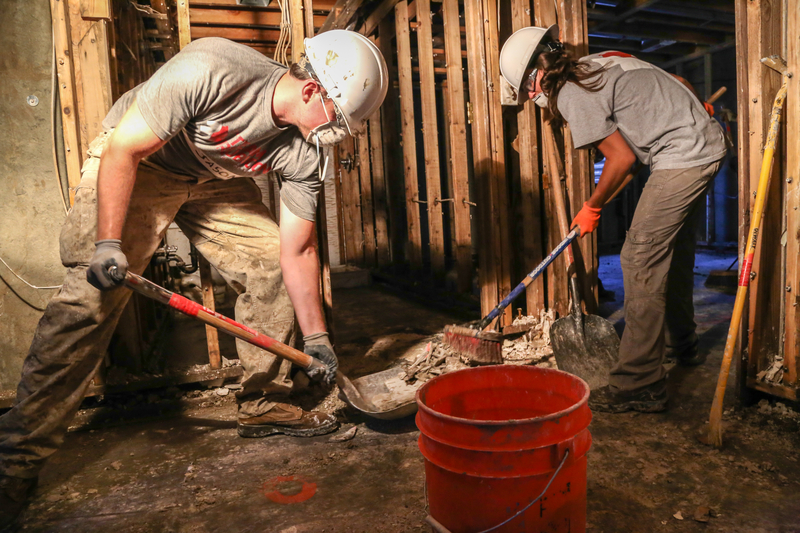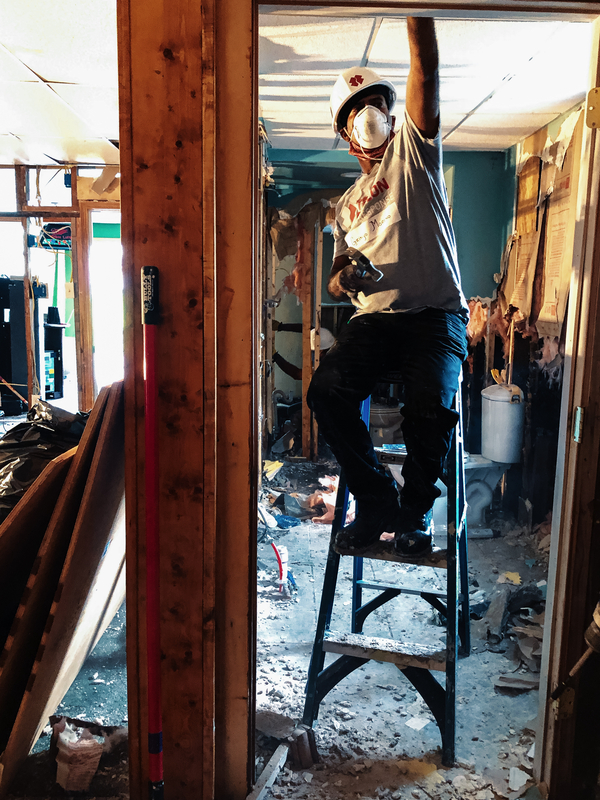For several days in September 2013, torrential rains poured down onto Lyons, CO, a small town located 17 miles north of Boulder, causing St. Vrain Creek, a waterway that cuts through the region, to flood. The storm remained relentless, forcing residents like Chaz Wyland to evacuate. Grabbing only a few essential possessions, Wyland and his family fled to higher ground to wait out the storm.
“Living so close to the river, we acted quickly to get to higher ground once reports of the flood started to come out,” Wyland says. “The evacuation process was pretty extreme. It was a definite get-out-of-the-way-or-else type of moment. There wasn’t a lot of time to grab anything, [so we] gathered our essential possessions and left.”
Once the rains subsided and the floodwaters waned, Wyland discovered that the damage done to his home was extensive and beyond what he would’ve ever expected.

“The flash flood that rolled through involved lots of swift water and debris,” he says. “On top of all the water damage on the lower floor, there was also structural damage to the foundation. It also basically ripped off a deck on the outside. We’re lucky to have left in time because there was a good chance we would not have survived.”
While Wyland says that he and his family were fortunate to survive the natural disaster and that they were able to return to their home a few days after the storm, he says if it were ever to happen again, he would’ve done things differently.
“First, I would have been better prepared with some essential supplies to help me move quickly during an emergency,” he says. “This would’ve helped me get out of the door quickly when danger was imminent. I also take any threat of disaster far more seriously today than I did before I was a victim of a flood. It’s nothing to mess around with, and it’s essential to pay attention when warnings occur.”
Seven Tips for Surviving a Flood
Make a Plan
Right now, before a disaster strikes, make a plan for your household so you know what to do in case a flood occurs. Practice evacuation routes and have a meeting point in place.
Pay Close Attention to Flood Warnings and Alerts
…whether by listening to your local radio station or through an app like the Red Cross’s emergency alert. Seek higher ground and evacuate if you’re directed to do so by the authorities.
Grab a Disaster Preparedness Kit and Get Out
Before a disaster strikes be sure to build an emergency preparedness kit that can be grabbed at a moment’s notice.
In the face of a storm, try to gather enough nonperishable foods, such as canned goods and bottled water, to last for several days, as well as a first-aid kit. Other important tools include flashlights, batteries, and phone chargers.
As an added plus, store any valuable files or information—or family keepsakes—in a waterproof container outside of an area likely to flood.

Stay Out of the Basement
Walls can collapse in floods, trapping people under debris and under rising water. When the remnants of Hurricane Ida arrived on the east coast, bringing with it substantial flooding, at least 46 people lost their lives in New York, New Jersey, Pennsylvania, and Connecticut. Many were trapped in flooded basements.
Avoid Traveling Through Flood Waters
Even if you think you can pass through moving waters, don’t. Six inches of floodwaters is enough to knock you down, and a foot is enough to sweep a vehicle away.
Monitor the Changing Situation
Once in a safe location, stay up to date on the situation by monitoring weather reports on the television, radio, or via cell phone emergency alerts, or through an app like NOAA’s Clime.
After the Waters Recede, Avoid Electrocution
Do not touch any electrical equipment if it’s been in standing water or if you’re wet. Wear protective gloves and boots to clean up debris.




